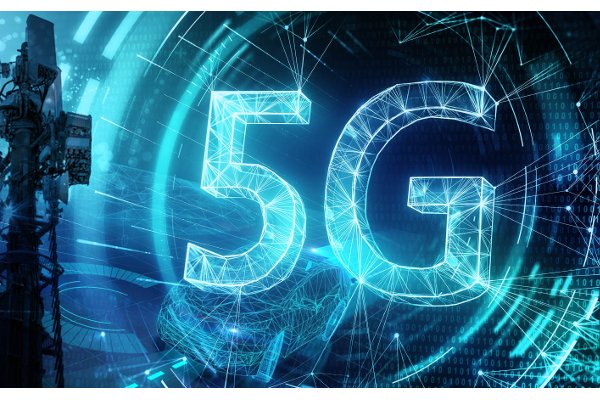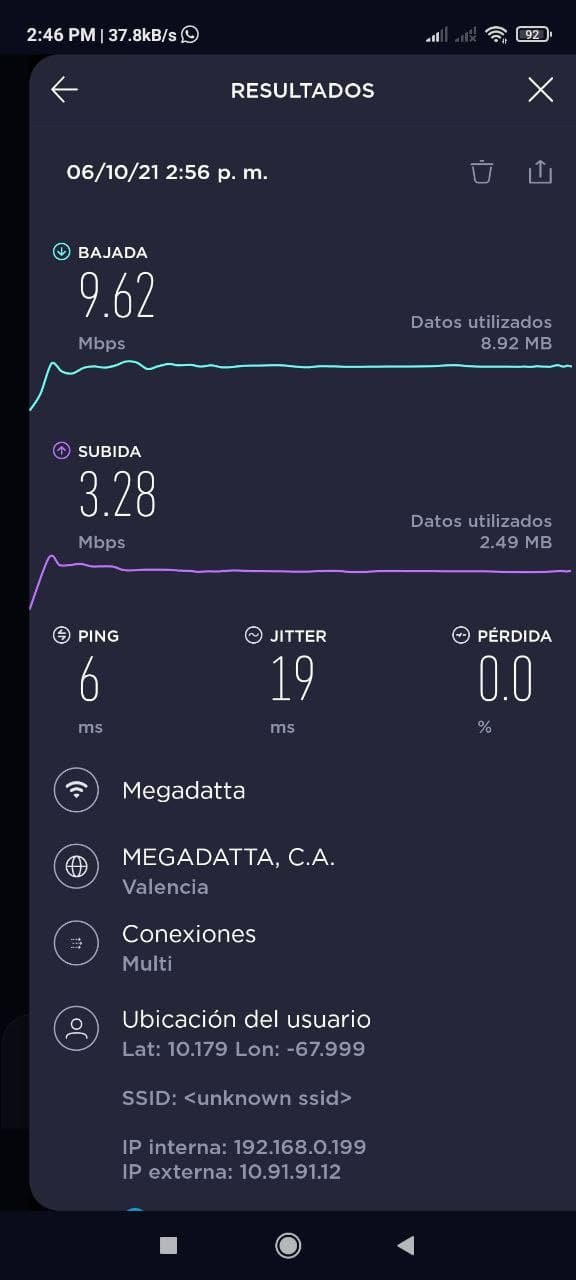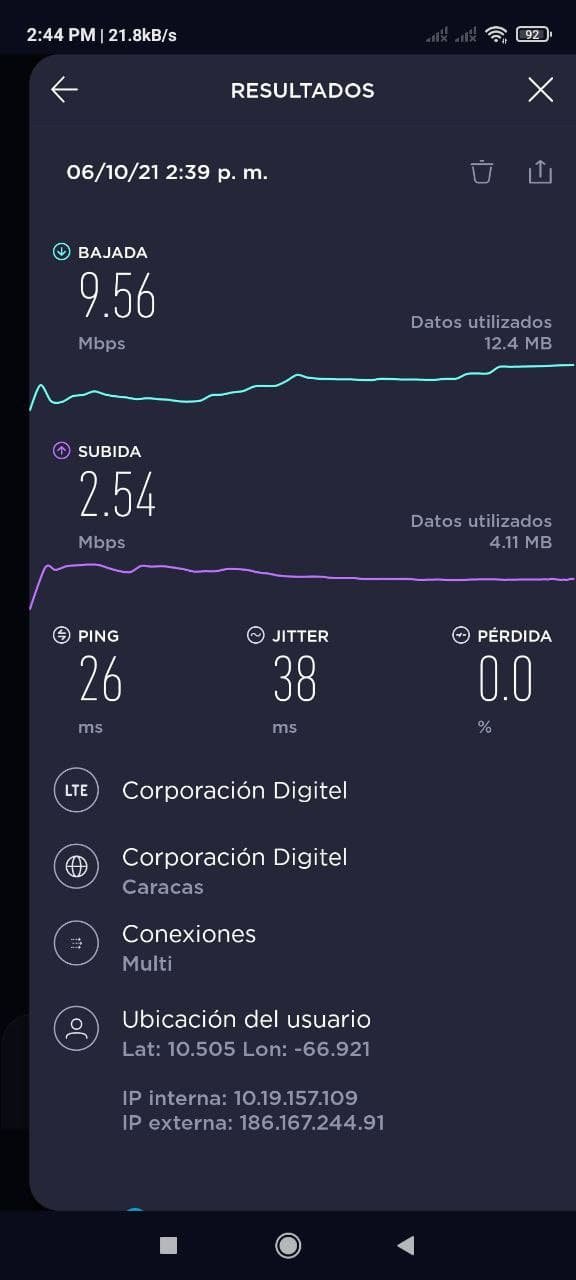Hi #geekfans, a topic that I have followed for some time is the development of fifth generation wireless networks, also known as 5G, even in 2019 I wrote a short article about the benefits that this network would offer, the most promised, End the latency that has not allowed technology to be fully controlled remotely, so join me in this synthesis so that you know a little about what it is about and what its progress is worldwide.
Hi #geekfans, un tema que he seguido desde hace algún tiempo el es desarrollo de las redes inalámbricas de quinta generación, conocidas también como 5G, incluso en el año 2019 escribí un breve articulo sobre las bondades que ofrecería esta red, la mas prometida, acabar con la latencia que no ha permitido que la tecnología pueda ser controlada plenamente a distancia, por eso acompañenme en esta síntesis para que conozcas un poco de que se trata y cual es su avance a nivel mundial.

It is important to make clear that this technology is in an early stage of development, the most developed nations have not yet fully implemented it, because the first stage of these networks is in its NSA phase, and there is still a long way to go before reaches its SA phase, for this reason it is that this technology will take much longer to be implemented in underdeveloped countries.
Es importante dejar en claro que esta tecnología esta en una etapa temprana de desarrollo, las naciones más desarrolladas aun no la han implementado por completo, debido a que la primera etapa de estas redes se encuentra en su fase NSA, y aún falta mucho para que alcance su fase SA, por tal motivo es que esta tecnología demorara mucho más en implementarse en los países sub desarrollados.
¿5G NSA and SA?
If you wonder what 5G NSA networks are, it is easy to understand. NSA means non stand alone, or in other words not independent, this facilitates its understanding, because it is the networks whose protocol is being executed by 4G infrastructure, which has higher speeds, but does not exploit the maximum potential. The stand alone or independent SAs are those that use the infrastructure due to the 5G protocol, they are more expensive and complex to implement, that is why they take more time to be applied.
Si te preguntas que son las redes 5G NSA, es sencillo de entender. NSA significa non stand alone, o en otras palabras no independiente, esto facilita su comprensión, porque son las redes que su protocolo esta siendo ejecutado por infraestructura 4G, que tiene velocidades superiores, pero no explota el máximo potencial. Las SA stand alone o independientes son aquellas que utilizan la infraestructura debida al protocolo 5G, son mas costosas y complejas de implementar, por eso toman mas tiempo en ser aplicadas.
What is latency on the internet?
Understanding the difference between 5G NSA and SA networks helps to be more clear about latency, the time it takes for your network to transmit or receive data packets. Latency is also known as ping, and it is measured in milliseconds or ms, and has nothing to do with your internet connection speed.
Comprender la diferencia entre las redes 5G NSA y SA, ayuda a tener mas claro lo que es la latencia, el tiempo que demora tu red en transmitir o recibir paquetes de datos. La latencia también es conocida como ping, y se mide en milisegundos o ms, y no tiene nada que ver con la velocidad de conexión de tu internet.


Put more simply, the connection speed is like the highway, the more lanes it has, the more vehicles can circulate, that is, the larger data packets you send and receive. The ping or latency would be the speed with which one of those vehicles moves and arrives from point A to B. For this reason, when you do a speed test, keep both factors in mind.
Dicho de manera mas sencilla, la velocidad de conexión es como la autopista, entre más carriles tenga, más vehículos podrán circular, es decir, paquetes de datos más grandes enviás y recibes. El ping o latencia seria la velocidad con que uno de esos vehículos se traslada y llega del punto A al B. Por tal razón cuando hagas un speed test ten presente ambos factores.
4G vs 5G latency
The general latency of 4G networks is 20 to 60 ms, in 5G NSA networks it has dropped to 8 ms, and the target of 5G SA networks is <1ms. Let us remember that this technology is mainly for mobile internet, because there are wired internet, for fiber optics, that the ping or latency is really low.
La latencia en general de redes 4G es de 20 a 60 ms, en redes 5G NSA ha descendido hasta 8ms, y el objetivo de las redes 5G SA es de < 1ms. Recordemos que esta tecnología es de internet móvil principalmente, porque hay internet alámbricos, por fibra óptica, que el ping o latencia es bajo.
 |
 |
But the development of faster mobile internet seeks to solve the problem of critical communication, where decision-making is ultra-fast and extremely reliable, for industrial and private services, such as, for example:
Pero el desarrollo de internet móvil más rápido busca solventar el problema de la comunicación critica, donde la toma de decisiones sea ultra rápido y extremadamente confiable, para servicios industriales y particulares como, por ejemplo:
- Real-time communication from sensors to actuators for industrial applications
- monitor health remotely and execute treatments in real time.
- Automated vehicles that can be driven alone, or can be driven remotely.
- Drone / robotics application controlled in real time or automated.
Comunicación en tiempo real de sensores a actuadores para aplicaciones industriales
monitorear la salud a distancia y ejecutar tratamientos en tiempo real.
Vehículos automatizados que se puedan conducir solos, o puedan ser conducidos a distancia.
Aplicación de drones/robótica controlados en tiempo real o automatizados.
Let's take an example, the fastest cargo drone on the market flies at a speed of 120 km / h, that's 33.3 meters per second and 3.3 cm every millisecond. If a connection has a latency or ping of 20 milliseconds, a response to a warning signal to a command center, or a route correction, will arrive with a difference of a time frame corresponding to more than 1 meter, that is, the movement will be delayed after advancing one meter. Here I share a video of how this is being achieved.
Supongamos un ejemplo, el dron de carga más rápido del mercado vuela a una velocidad de 120 km/h, eso es 33.3 metros por segundo y 3.3 cm cada milisegundo. Si una conexión tiene una latencia o ping de 20 milisegundos, una respuesta a una señal de advertencia a un centro de mando, o una corrección de ruta, llegara con una diferencia de un marco de tiempo correspondiente a mas de 1 metro, es decir, el movimiento será retardado luego de avanzar un metro. Aca comparto un video de como esto se está logrando.
Importance and difference 4G and 5G
Due to these limitations, the technology did not take the necessary leap to achieve greater automation and remote control, because it is no longer a question of how much information can be transmitted, but at what speed. To get a clearer idea of the differences, make a small comparison chart between 4G and 5G.
Debido a estas limitantes, la tecnología no daba el salto necesario para lograr una mayor automatización y control a distancia, porque ya no se trata de cuanta información pueda ser transmitida, si no a que velocidad. Para tener una idea mas clara de las diferencias, elabore un pequeño cuadro comparativo entre 4G y 5G
However, there are more and more investors in the development of this technology, according to the report published on October 11 of this year by the Global mobile Suppliers Association, which I quote:
- 180 operators with launched public 5G services, in 72 countries/ territories.
- 465 operators in 139 countries/ territories are investing in 5G networks in the form of tests, trials, pilots, planned and actual deployments.
- Of those, 180 operators in 72 countries/ territories have launched commercial 3GPP-compatible 5G services (either mobile or FWA).
- 89 operators are identified as investing in 5G standalone for public networks (including those evaluating/testing, piloting, planning, deploying as well as those that have launched 5G SA networks).
Sin embargo, cada vez son mas los inversores en el desarrollo de esta tecnología, según el informe publicado el 11 de octubre del presente año por la Global mobile Suppliers Association, el cual cito:
- 180 operadores con servicios públicos 5G lanzados, en 72 países / territorios.A finales de septiembre de 2021, los datos de GSA mostraban
- 465 operadores en 139 países / territorios están invirtiendo en redes 5G en forma de pruebas, ensayos, pilotos, implementaciones planificadas y reales.
- De ellos, 180 operadores en 72 países / territorios han lanzado servicios comerciales 5G compatibles con 3GPP (ya sea móvil o FWA).
- Se identifican 89 operadores que invierten en 5G independiente para redes públicas (incluidos los que evalúan / prueban, pilotean, planifican, implementan y los que han lanzado redes 5G SA).
For those of us who love technology and its advances, it is fascinating to be able to know about the development of 5G networks, to know that any device will be able to connect to a network and operate intelligently, thus facilitating many of the daily tasks that we perform, which known as IoT or the internet of things. It is true that for some countries implementing these networks will take much longer than in others, due to the high costs, which can range for a 5G NSA network $ 2B to a 5G SA network in $ 10B, mainly due to expenses that the pandemic is generating, However, despite the passage of a few years, the future looks bright and exciting.
Para los que amamos la tecnología y sus avances, resulta fascinantes poder saber sobre el desarrollo de las redes 5G, saber que cualquier dispositivo podrá conectarse a una red y operar de manera inteligente, facilitando así muchas de las tareas diarias que desempeñamos, lo que se conoce como IoT o el internet de las cosas. Es cierto que para algunos países implementar estas redes demorara mucho más que en otros, debido a los altos costos, que pueden oscilar para una red 5G NSA $ 2B a una red 5G SA en $ 10B, principalmente por gastos que esta generando la pandemia, sin embargo, pese a que pasaran algunos años, el futuro se ve prominente y emocionante.
Images source 1, 2 and 3
Speed test images are of my property
new problem will be range
Of course, new technology, new problems.
Que interesante no es solo la cantidad de ancho de banda que tengas, tambien influye la latencia para poder implementar este tipo de tegnologia donde el reatardo en la respuesta debe ser exacta para poder ejecutarlas si no seria desastroso, ya que deben actuar en tiempo real... Bien bueno tu post @danielcarrerag
Me alegra que te guste y compartas este conocimiento. Deseando que sea implementado en un futuro no muy lejano en el pais